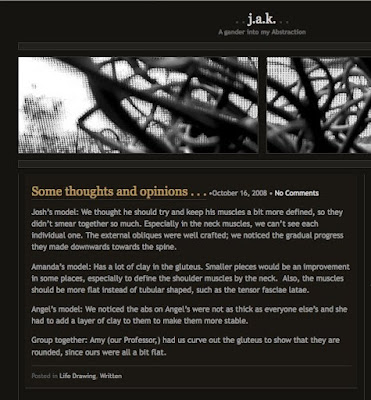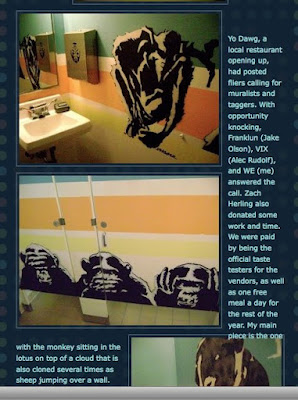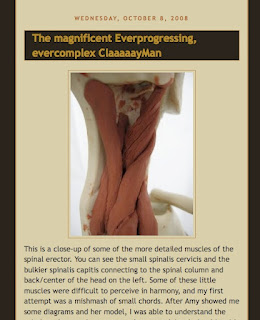this assignment is for the 301-002 (11:15 - 2:20) classpost images of
1) one 10-minute pose from thursday, oct. 2 and
2) the 50-minute pose from thursday, oct. 2.with the 10-minute pose, include the three points you noticed that were different between your drawing and my 10-minute drawing. (i'll post this here as soon as i get to a camera--you can copy it to your blog if you'd wish)
also, for the 10-minute drawing and the 50-minute drawing, write a minimum of 200 words for each drawing addressing the following issues/questions:structurecan you see long axis lines and cross contour lines in the drawing? do they function to show the length and direction of each of the main forms of the figure? if you have outlines in the drawing, are the outlines somewhat open and varied in value and character? or too similar in value, weight? are there outlines in the drawing that create a flat, coloring-book feel?
anatomycan you see an egg-like form indicating the rib cage? are there cross-contour lines indicating pelvic landmarks? does the drawing have anatomical landmarks we've studied so far? (for the 10-minute pose write about skeletal landmarks, for the 50-minute pose also include muscles--spinal erectors, external obliques, and rectus abs).
lineis there line variation in the drawing? variation of value? character? thickness/thinness? for the 50-minute pose write about how line functions to create atmospheric perspective.
compositionfor each drawing describe the relationship between the drawing of the figure and ground. how does the figure fit within the picture plane? is there enough space around the figure to make it feel like it's not too crowded? is the whole figure (10-minute pose) or whole torso (50-minute pose) included? is the figure cropped? if so, how and why? what is the scale of the figure in relation to the picture plane? is it a tiny figure in the middle of a large page? does the drawing of the figure take full advantage of the space of the page?
 flexor digitorum longus
flexor digitorum longus
 anterior leg = extensors (dorsiflexors)
anterior leg = extensors (dorsiflexors)
 lateral leg
lateral leg
























